|
A biweekly newsletter from the Anthroposophical Society in America
 |
|
November 21, 2020
Dear Members & Friends,
We are grateful for this community of consciousness! From the extraordinary communities and schools and farms, to the healers and artists and activists, to the conversations of study groups where so much inner life and depth is quietly discovered and share, to the class meetings of the School for Spiritual Science, mostly in abeyance for now. A pattern which scarcely catches the eye is quietly alive in the world, and we are blessed to be aware and so to be a part of it.
Soon the strange and novel events of this year will be intertwined with familiar festivals, mass shopping events, and end of year appeals. And always we are preparing for the fuller birth of our humanity within us...
|
|
 |
| Anthroposophic Nursing Practice: Foundations and Indications for Everyday Caregiving is now available in English. Anthroposophic nurses form a bridge between treatment of the body and treatment of the patient’s soul and spirit by actively valuing the human body, paying attention to touch, using warmth, cold, air, and light to promote healing processes, and much more. A key aspect of this book involves the idea and practice of “nursing gestures,” relating inner attitudes and practical nursing activities to one another in detail through numerous examples and overviews. Arthur Zajonc writes that “Anthroposophic Nursing Practice spans the full gamut of practices that should be a part of contemporary holistic therapeutic care and extends them in significant ways: biography, inner development (exercises & nurse meditations), nursing gesture, rhythm, warmth, washing, wound care, pneumonia, rhythmical massage, compresses, and specialization for example in child birth, childhood education, psychiatric nursing, cancer, and geriatrics, including palliative care. Every nurse who approaches the care of their patients with a modern spiritual perspective will want this book on their shelf and moreover in their heart.” |
|
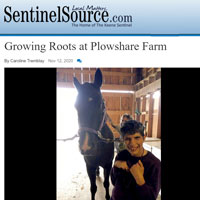 |
| “Growing Roots at Plowshare Farm” was recently published at SentinelSource.com (Keene, NH). The article by Caroline Tremblay opens: “‘If people actually really knew how daily life is here, we’d have a line out the door,’ said Kimberly Dorn, director and community member at Plowshare Farm in Greenfield, N.H. At this extraordinary biodynamic farm, there are more than just greenhouses and garden beds.” Of course the website offers the motto, “Sharing joy, work, and meaningful lives in a caring community.” Under “Who We Are” it continues, “Plowshare Farm is an attempt to be responsive to the social, human, spiritual and ecological challenges of our times by creating a truly inclusive environment where every person and every aspect of the natural world can be learned from and valued.” The Sentinel article unfolds the story of the community: five houses, 45 life-sharing community members, a third greenhouse, a shop in downtown Wilton, NH. And of course adjustments to the pandemic, closing up for three full months without administrative staff, volunteers, day program participants. “‘What we learned is how our strength really is in the life-sharing,’ Dorn said. ‘The resilience is in that.’” |
|
|
|
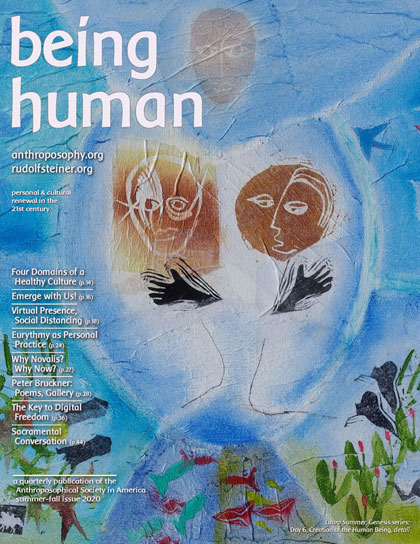
the recent being human is now online
A full PDF of the issue sent to members in August is now online to view or download. Many individual articles are available in mobile-friendly format.
Authors and reviewers include Paul Gierlach, Dennis Dietzel, Christopher Schaefer, Cynthia Hoven, Gail Langstroth, Bruce Donehower, Peter Bruckner, Boyd Collins, Fred Dennehy, and Philip Thatcher.
Special feature: “The Foundation Stone Meditation as Gift, Friend, Helper, and Key,” by Rudiger Janisch, Sherry Wildfeuer, Helen Lubin, and Frank Agrama, representing sections of the School for Spiritual Science.
With remembrances of Patti Smith, Lora Valsi, John Moses, John Roger Cunningham, Richard Rettig, and Margaretta Bornhorst.
|
|
|

|
| Rudolf Steiner on Viral Illness and Epidemics. Yes, we reported some weeks ago on the publication by Daniel Hindes of his collection of all Steiner references to viral illness and epidemics. Now Michael Ronall has written a very useful review of the book which you can view or download as a PDF file. Michael finds the book “delightful,” noting that “It might seem odd to call delightful an anthology that addresses extended episodes of widespread and unpredictable physical suffering and their consequent social uncertainty, confusion, and resultant demoralization, but human beings are so constituted as to be able to find solace through understanding even the greatest calamities.” The review is also delightful, full of ideas and pungent quotations, even in the footnotes, where we find: “8. ‘God whispers to us in our pleasures, speaks in our conscience, but shouts in our pain: it is His megaphone to rouse a deaf world.’ C.S. Lewis, The Problem of Pain, p. 91.” Michael writes to us from Hamburg, which in today’s world is simply somewhat west of St. Petersburg, Russia, and east of Poughkeepsie, NY. |
|
|
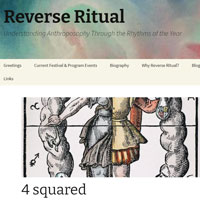
|
| Hazel Archer-Ginsberg leads her latest blog post at ReverseRitual.com with an illustrated quotation from Rudolf Steiner on the karmic future and background of the temperaments. He begins with suggestions on preparing the next life’s etheric body through the present astral body. “The ideas, feelings and so on which transform the astral body during a long life will produce a marked change in the etheric body only in the next life. Thus if someone wants to be born in his next life with good habits and inclinations, he must try to prepare these as much as possible in his astral body. If he makes the effort to do good, he will be born in his next life with the tendency to do good and that will be a characteristic of his etheric body. If he wants to be born with a good memory, he must exercise his memory as much as he can; he must practise looking back over the separate years of his life and over his life as a whole.” The temperaments are qualities of the etheric body, so our present temperamental makeup points back to astral experiences of the past life. A colorful chart presents features of the temperaments. |
|
|
|
|
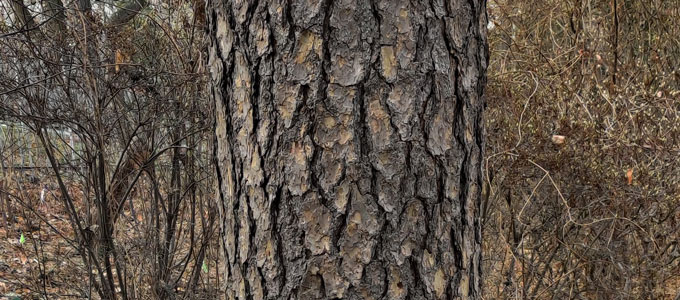 |
|
THANKSGIVING THOUGHTS
Thanksgiving is almost here. It is a harvest festival, of course, though not strictly part of the ancient cycle of holidays; perhaps it is a late Michaelmas? It is in any case a much loved holiday in the United States. It brings together the dearest people, the most treasured food, and hopefully the most grateful behavior all around.
This year, if you are following the public health advice to keep your physical gathering small, along with the Zoom and phone calls, you might also be missing someone who is among the hospitalized or the 250,000 early-departed in the consequence of this pandemic. This is almost 100 times the human cost of the terrorist attack of “9/11”—which we still memorialize each year, even as we forget many of our original impressions.
Back in the autumn of 2001 there was initially much human questioning. Why would people commit suicide in order to take others’ lives and destroy property—notably the “world trade center” and the military command center of the richest and most powerful country in the history of the world?
There was also in some circles the weighty imagination of the victims as sacrificial offerings. A few recalled the curious connection of Joseph Beuys, the artist and social philosopher inspired by anthroposophy, who had pictured the twin towers of the World Trade Center daubed with shoe polish and labeled Cosmas and Damian, twin brothers, Syrian Arabs, physicians in the coastal city of Aegea who accepted no payment, and Christian martyrs under the Roman emperor Diocletian.
Around the same time (1974) Beuys had flown to NYC, been wrapped in felt and put in an ambulance, and delivered to an art gallery where he spent eight hours a day for three days in a large cage with a coyote, “America’s spirit animal.” This “Action” was called I Like America and America Likes Me.
If we take our current time in the sense of a mystery drama, of performance art, none of what is happening seems so strange. Our democracy is openly questioned. Our hospitals are in danger of being overwhelmed. It has recently come home to many of us that some people with resources are thinking further ahead than most of us.
The psychological threat we offer each other out of our so-slowly-maturing egoity is echoes now as a physical threat of contagion. The stock market booms while “essential” workers are at risk, and many “blue-collar” workers are lining up at food banks for the first time or waiting for eviction notices and the end of unemployment insurance.
If all this were staged, credibly, it would be staggering. But it is on stage, and we can follow the path of wonder, reverence, harmony, and devotion to a place of open minds and hearts and will, where understanding may be available.
A bit of interesting language meditation could be helpful just now, on the words “thinking” and “thanking.” It’s an obvious pairing also in German, denken and danken. It seems like a souvenir of the ancient way of language still found in Hebrew, where a word “root” is made of consonants (typically three in Hebrew) through which vowels move in order to give new meanings. With the sense of the vowels that we have from eurythmy, such lingering word groups as “sing-sang-song-sung” come to life in most interesting ways.
Anyway, there is no thanking without thinking: what am I thinking of when I feel grateful? But there can be, and often is, thinking that is not thankful: both good, clear observation, and cold, selfish calculation come to mind. Thanking the man who named the types of clouds, Goethe put them in poems, nimbus, stratus, cumulus, and ended by reminding that the now distinguished phenomena need to be brought back together into a whole reality.
Physically together or entirely alone, physically, next Thursday, perhaps we can try to put the phenomena back together into the wholeness that so easily escapes us. Some phrases: “America, love it or lose it?” “The great reset” — toward more humanity, or less? And “we shall meet, but we shall miss them; there will be one vacant chair...”
|
|
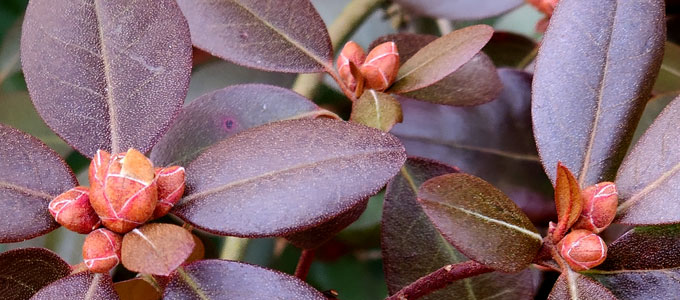 |
|

|
| Andrew Linnell, well-known for his work on anthroposophy and technology and co-founder of the MysTech project, is author of the book The Hidden Heretic of the Renaissance: Leonardo. Andrew’s professional career was in the computer industry, but he studied art history with William Mann at Emerson College, Sussex, England. He leads The Christian Mysteries study group which is offering a webinar, “Leonardo's Christmas Tale: Abandoning Adoration to Paint the Virgin of the Rocks.” In 1481, Leonardo abruptly stopped painting his Adoration of the Magi. He then began his original Virgin of the Rocks. What happened? The Platonic Academy of Florence offered Leonardo insights into the 'heresies' of Early Christianity. Andrew will speak about his 35 years of research and his book. What was Leonardo really depicting in his original Virgin of the Rocks? Get ready for an entertaining art history journey exploring paintings by several Renaissance artists who supported this 'heresy.' Andrew has been a featured speaker at the Springfield Art Museum and for other cultural organizations in numerous cities. |
|
|
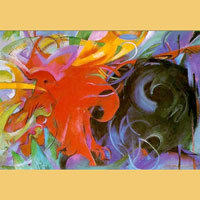
|
| Rev. Gisela Wielki’s retirement after fifty years’ service as a Christian Community priest was recently celebrated in New York with an auction of original artworks, benefitting the priests’ retirement fund. A few weeks ago Gisela posted on Facebook about Fighting Forms, a 1914 painting (above) by Franz Marc (1880-1916). Known for deeply sympathetic paintings of animals, Marc was killed in World War I. “‘The world is giving birth to a new time. There is only one question: has the time already come today to free oneself from the old world? Are we ripe for the new life?’ The victorious power of the spirit deeply penetrated him. This certainty gave him security, a source of his unbroken courage. And so he writes in an essay about ‘Spiritual Goods’: ‘New times are hard to understand because we are unused to them...We will not tire of...speaking out the new ideas and of showing the new pictures, until the day comes when we meet our ideas on the street.’ There was a great deal of darkness in the 20th century that followed these hopeful words of Franz Marc... We owe it to all who have gone before us with hope and trust in the future, even if the signs of the times seemed to contradict them, that we too uphold trust and hope in the capacity of humanity to evolve.” |
|
|
|
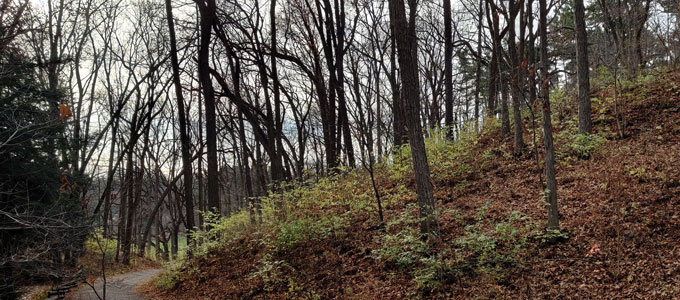 |
|
Moving toward winter, our photos show a changed palette in our nearby arboretum. Under bare trees the bushes are still green, capturing the late sunlight unimpeded. Attention shifts to the textures of bark and new buds that will wait through the winter.
John Beck
Editor, being human
editor@anthroposophy.org
Anthroposophical Society in America
|
|
Anthroposophical Society in America (US)
www.anthroposophy.org
|
|